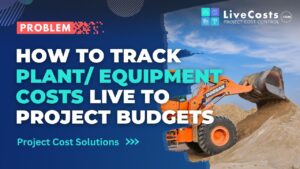Episode 55 – Eoin Darby
Advice For Builders Dealing With Material Price Increases
Eoin Darby is leading QS with expertise in measurement, estimating, tender advice, mortgage approval estimates, post contract cost control.
Darby QS has successfully tendered for over €70 million worth of work on behalf of building contractors primarily in the residential sector in Ireland and the UK.
In this episode, Eoin shares his insights into the current problems he sees day to day with material price increase, shortages and other cost issues facing the industry.
Podcast Highlights
What material price increases are causing the most pain for builders?
Ciaran Brennan:
It is unbelievable what’s happening out there with materials. What are you seeing? What materials that you work with on a day-to-day basis are in trouble or causing trouble for builders?
Eoin Darby:
It’s the perfect storm. Most Januaries, there tends to be an element of price increases and they’re kind of teed up towards the latter part of the year. So as QS’s, we always kind of preempt those increases and try and factor them in.
If you’re tendering something towards the end of the year, you know there’s more than likely going to be an increase in some of those typical materials. So you factor them into your tenders.
There’s basically been a double hit of the typical increases that come in January. They’re coming again in March, April, May.
The primary ones we’ve seen since the start of the year, insulation was flagged early on. That was a big one. All the PIRs and that, pretty much 15% across the board.
It affects so many elements of each project. You’ve insulation around the whole building, in the roof, your walls, your floors. Then timber is another one that’s just shot up, upwards of 30% on some stuff. And again, material supply issues, as well.
I described this the other day to someone. It’s like when a country’s financially in trouble, and someone says the banks are running out of money. Everyone goes to the ATM to run on the banks.
It’s like all the builders knew there were shortages coming up here because, firstly, of reopening and, secondly, they wanted to get in before the price increases came in.
The builder providers, a lot of them were really short on some vital materials there. One particular builder I worked for, he ran up there only two weeks ago for 20 sheets of OSB and he was offered 10. He’s like, “But I need 20. I can’t do anything with 10.”
What are builders doing to work around material price increases?
Ciaran Brennan:
Have you noticed any of the builders you work with, that are probably sitting in a decent cash flow position, bulk-buying any materials?
Eoin Darby:
Definitely, yeah. It’s just a natural thing. You want to get in before the price increases. There’s been several of my projects where the builders have been at sub-structural level, and they’ve bought up all the cavity wall insulation up front.
They’re putting through alternatives instead of doing your PIR insulation in the roofs, they’re suggesting maybe spray foam or something as an alternative. Or a different type of insulation that is more readily available.
Builders will come up with whatever solution they can to ensure they’re not paying over the odds, but eventually these price increases are just going to come in, and that is the price they’re going to pay for them.
Who is carrying the cost of material price increases on projects?
Ciaran Brennan:
I mean, you’ve touched on this, rising costs on insulation of 15%, timber upwards towards 30%. I actually spoke with one of our customers the other day, he went looking for bricks and he said he couldn’t get them, first of all there are none there.
Second of all, the price that he was given when he could get them was ridiculous.I mean, what happens there Eoin with the builder and the client? There’s obviously a tender in place, there’s a contract in place, but a lot of this is unforseen. I mean, what happens in that situation?
Eoin Darby:
It’s very tricky. I just split it into two different areas, jobs that we’re already post contract and jobs that we’re tendered for.
Ciaran Brennan:
Oh, is it the builder, then, that has to take that cost?
Eoin Darby:
In that scenario, yes, because we have, in the RRAI contracts, we have clause 36, which is the price and wage inflation clause. That’s usually struck out nine times out of 10, every tender, I would see, it’s struck out and basically, the builder bears the cost of inflation and they’re given the opportunity to price that risk, they can put in a figure to cover inflation, but of course, nobody could have foreseen that there would be so many price increases this side of, if you tendered for something towards the end of the year.
A lot of builders weren’t sure, going into the second major lockdown, when we were going to reopen. So a lot of them were pricing jobs to get them because nobody knew where this was going.
They’ve come home to roost these tenders and then the price increases have gone up. Now, in saying that, if you haven’t signed the contract yet, there is still opportunity to negotiate on it, it has happened on several of my projects, both where I’m working for builders and when I’m on the other side of the table, working for the clients and the builder has basically gone back and said:
“I can’t stand over the tender that I’ve submitted in January or February because nobody knew where this was going and and a lot of these increases were only announced in March and April. I need to increase my tender.” And it’s a case of, some of them are like, “Take it or leave it because I’m not losing money on this.”
Ciaran Brennan:
I put myself in the builder’s shoes here. There’s no way you’re going to break ground on a fresh project knowing you’re going to lose money. What do you do in that situation? You’ve got to probably just sit down and reevaluate it with the client.
Eoin Darby:
Yeah. I have gone back on numerous tenders that were tendered in January and February and had to increase the likes of insulation, timber, steel, put that to the clients or the architects and say, “Look, we’ve no choice here. All builders are in business to make money. There’s no point in doing something for cost. They have to have profit on their material supply.
Tips for builders dealing with material price increases
Ciaran Brennan:
You’re in the hot seat for a lot of builders in terms of managing costs and looking at price increases. Have you any tips for any builder out there facing material shortages or large price increases.
Eoin Darby:
Sure. I mean look, there’s also a lot of panic going on at the moment, I would find. I’ve seen some tenders come back that have been wildly above expectations, market expectations as well.
I can understand that a lot of builders if they’re doing their own price and in-house, or that sort of thing, they might go, “Oh, geez, we’re getting hit left, right, and center here on material prices increases. We need to add 20% to our tender just to cover all these.” But, it’s not as simple as that.
There are elements that have gone up 20%- 30%, as we talked about with timber and that sort of thing. But, that’s not increasing your overall tender by 20%.
I suppose it’s about breaking it down into, what rates do we need to adjust here on our tenders going forward? Obviously I want to say, if you’ve got a good QS who’s tendering for lots of different builders, they’re going to have a good ear of the ground on what’s going on in the market with trades, and materials, and that sort of thing.
It’s just a case of really knowing your costs. Understand them, what rates have gone up, where you can go, if you’ve tender for something earlier on in the year. Going back and saying, these are the specific rates that we have to adjust. We can’t send over our tender, these need to go up.
Ciaran jumps in with – “What do you think? Do we see them (material) still rising over the next couple of months? Or is there going to be a point where it levels out”
Eoin Darby:
Yeah. I would hope that a lot of the big ones have, we know about them now. Structural steel was another big one, actually. I forgot to mention there as well. Yeah. Look, but who knows at the same time.
I mean it’s very hard for QS at the moment. It’s a constantly moving goalpost. You submit a tender, like there was a couple there in March and April, just mid tenders, and then you’re looking back four weeks later saying, “right? Those timber prices have gone up. What am I going to do here?”
Ciaran Brennan: “For the tenders that you’ve done recently, knowing what you knew at that time, is there a clause being written into that particular tender to manage this?
Eoin Darby:
I still think in all honesty, clause 36, it is as I said 9 out of 10 tenders, you’ll see it struck out. So, I can’t see that being brought back in. It makes things very difficult to work. If you’re working out on inflation of different products throughout the contract. I think builders just need to, if they’re given the opportunity to price it, maybe allow a sum against the inflation. I mean, that’s all you can really do at the moment.
There’s also the element that if you do price that, you’re at non-tier tender, where someone else might not have, they might just have it in their rates as opposed to pricing clause 36, the omission of it. It might stick out like a sore thumb if you’ve added on for that inflation, where other builders are priced out and haven’t.
So I think the key really is just, a full review of all your rates that you’re using, and making sure that you’ve got the cost covered and you have a reasonable profit built into every ratio.
Ciaran Brennan:
Yeah. I mean, there’s no question. Even companies will have their own internal QS’s. But, I suppose the value of an external QS does come into play when you’ve got your ear to the ground with lots of different companies, and you’re getting to see how lots of different companies are playing this out and then deploying those learnings to others is great.



